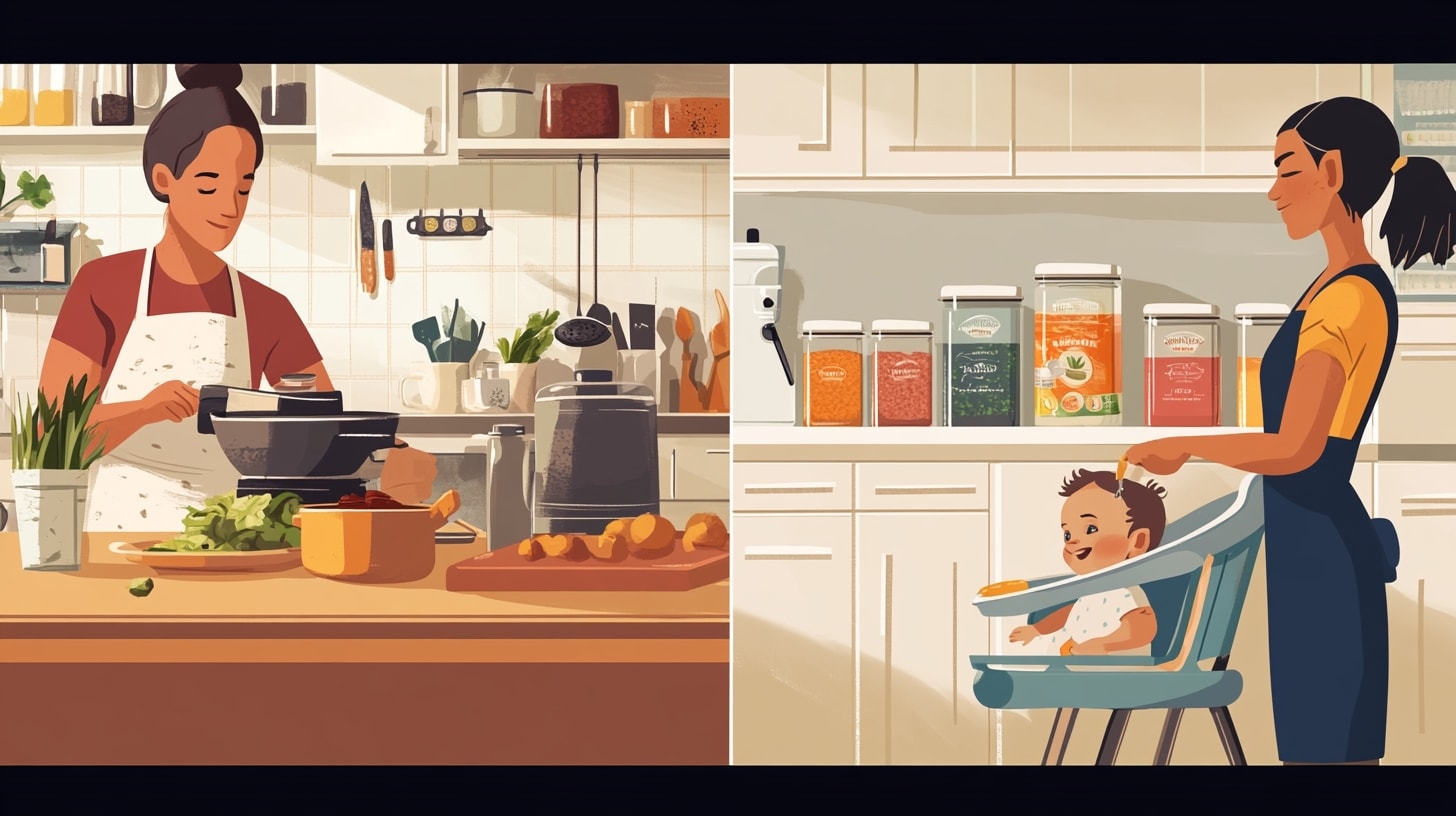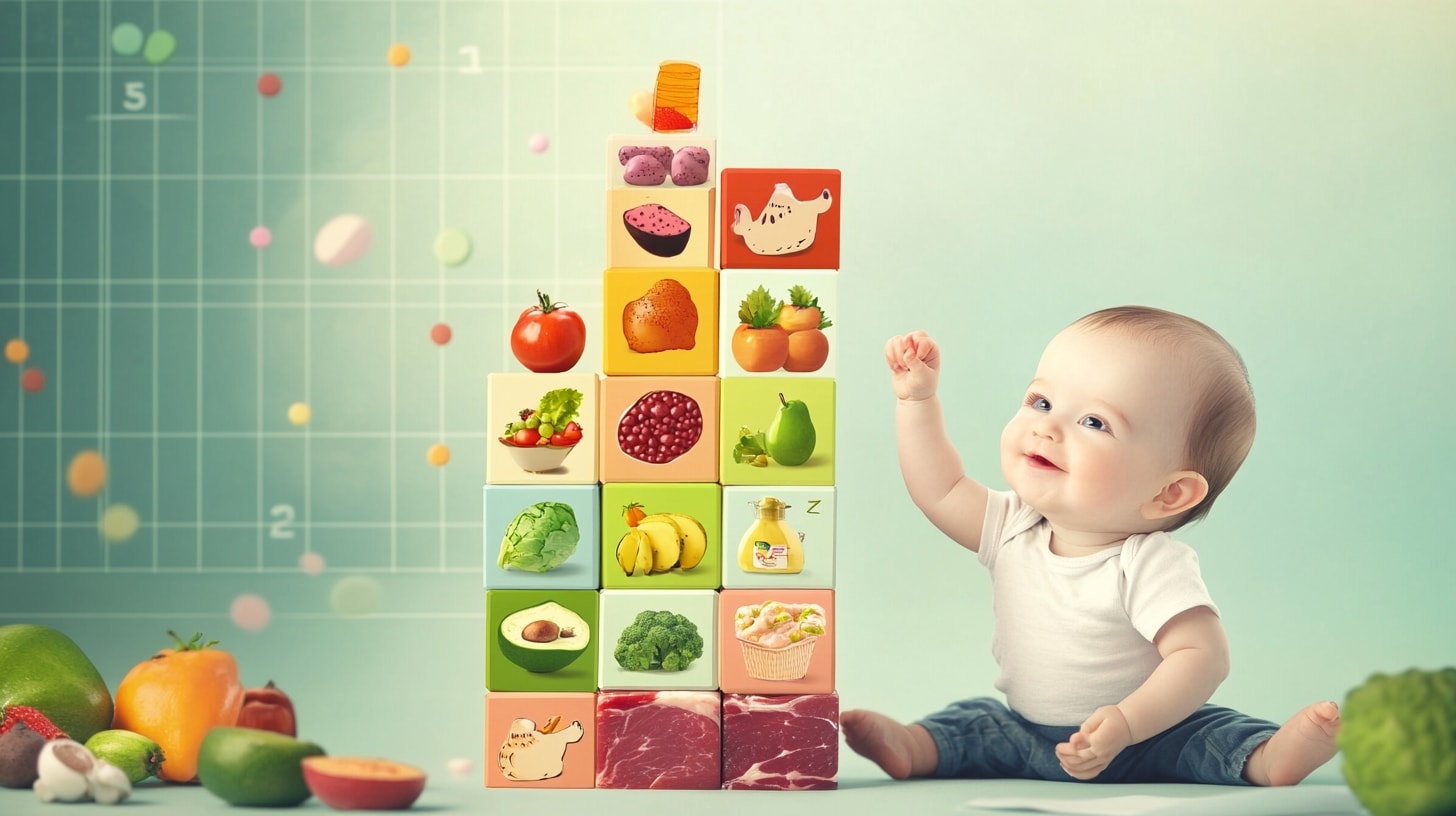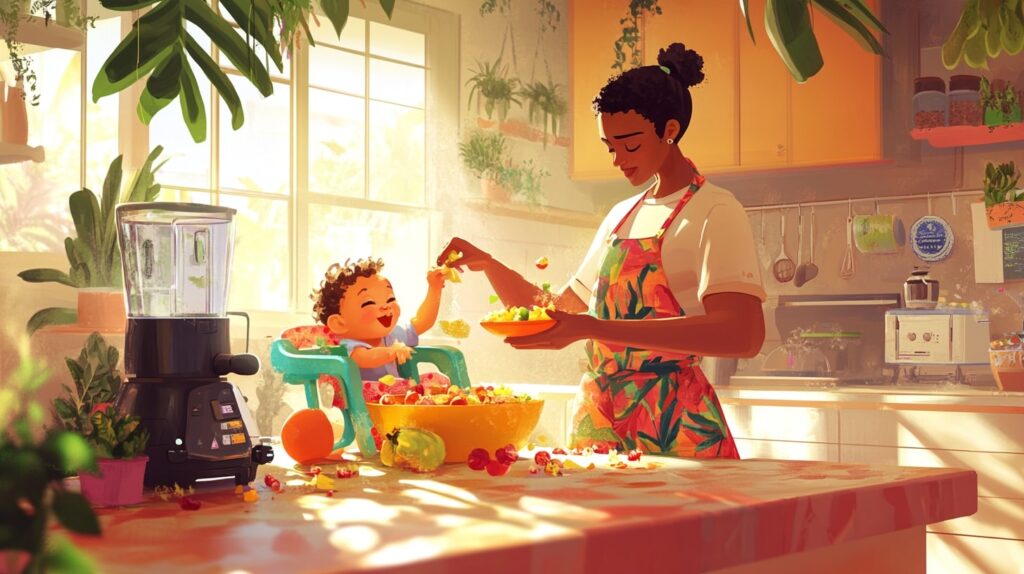Table of Contents
ToggleSpice Up Your Baby’s Plate: Caribbean-Inspired Secrets for Healthy Nutrition
Hey there, fellow sleep-deprived parents! Remember when your biggest food concern was whether to order pizza or Chinese? Well, welcome to the wild world of baby nutrition, where suddenly you’re expected to become a pediatric nutritionist, food detective, and master chef all rolled into one. But don’t worry, I’ve got your back (and your baby’s tummy).
When I first became a parent, I was overwhelmed by the sheer amount of information out there about baby nutrition. It felt like I needed a PhD just to understand what to feed my little one. But as I navigated this journey, I discovered some game-changing secrets that made the whole process not just manageable, but actually fun. And the best part? I found a way to infuse my Caribbean heritage into my baby’s diet, bringing a little island flair to those purées and mashes.
So, grab your favorite caffeinated beverage (you’re gonna need it), and let’s dive into the colorful, flavorful world of baby nutrition, Caribbean style!

Decoding the Baby Food Aisle: A Survival Guide
Picture this: You’re standing in the baby food aisle, surrounded by jars and pouches, each claiming to be the holy grail of infant nutrition. You pick up a jar, squint at the label, and… is that Sanskrit? Nope, just the ingredient list. Been there, done that, got the spit-up stained t-shirt.
Here’s the thing – decoding baby food labels doesn’t have to feel like you’re cracking the Da Vinci code. The key is knowing what to look for. First things first, check the ingredients list. The fewer ingredients, the better. If you need a dictionary to understand what’s in that jar, it’s probably best to put it back on the shelf.
Look for labels that list whole foods as the main ingredients. Apples, Sweet Potatoes, Cinnamon is music to your ears (and your baby’s taste buds). On the flip side, if you see words like concentrate, syrup, or anything that sounds like it belongs in a chemistry lab, it’s time to move on.
And here’s a little trick I picked up: imagine making that food in your own kitchen. If you can’t picture whipping it up with ingredients from your pantry, it’s probably not the best choice for your little one.

Homemade vs. Store-Bought: The Great Baby Food Debate
Ah, the age-old question that’s sparked more heated debates than whether pineapple belongs on pizza. Should you make your own baby food or buy it from the store? Well, like most things in parenting, the answer is: it depends.
Making your own baby food can be incredibly rewarding. You know exactly what’s going into your baby’s belly, you can customize flavors to your little one’s preferences, and let’s be honest, there’s something oddly satisfying about pureeing the heck out of a sweet potato.
But let’s get real for a second. Between diaper changes, feeding sessions, and trying to remember the last time you washed your hair, finding time to whip up gourmet baby meals can feel about as achievable as climbing Mount Everest in flip-flops.
That’s where store-bought options come in. They’re convenient, especially when you’re on the go, and many brands now offer high-quality, organic options. Plus, they come in handy when you’re too exhausted to even look at your blender.
My approach? A mix of both. I make my own baby food when I can, often in big batches that I freeze in ice cube trays (pro tip: silicone trays are a game-changer). But I always keep a stash of store-bought options for those days when cooking feels as appealing as changing a diaper explosion.

Solid Foods: When and How to Take the Plunge
Introducing solid foods is like watching your baby take their first steps into the culinary world. It’s exciting, messy, and let’s face it, pretty darn hilarious. But when’s the right time to start this adventure?
Most experts agree that around 6 months is a good time to introduce solids. But here’s the thing – every baby is different. Your little one should be able to sit up with support, have good head control, and show interest in what you’re eating. If your baby tries to snatch food off your plate or watches you eat with the intensity of a food critic at a Michelin-starred restaurant, it might be time.
Start with single-ingredient purees. Think of it as baby’s first tasting menu. Offer a new food every few days and watch for any allergic reactions. And remember, at this stage, food is more about exploration than nutrition. Your baby is still getting most of their nutrients from breast milk or formula.
Now, let me tell you about the first time I gave my daughter solid food. I had prepared a beautiful, perfectly smooth avocado puree. I was so excited, camera at the ready to capture this milestone. I spooned a bit into her mouth and… she promptly spat it out, looked at me like I’d betrayed her, and proceeded to smear the rest all over her face, hair, and somehow, my eyebrows. It was messy, chaotic, and absolutely perfect.

Caribbean Flavors for Tiny Taste Buds
Now, this is where things get really fun. Who says baby food has to be bland? Introducing your little one to a variety of flavors early on can help develop their palate and potentially prevent picky eating later. And what better way to do that than with the vibrant, delicious flavors of the Caribbean?
One of my favorite baby food recipes is a Caribbean-inspired sweet potato and coconut puree. It’s simple, nutritious, and introduces your baby to the tropical flavors of the islands. Here’s how to make it:
- Steam or boil a medium sweet potato until soft
- Puree it with a splash of coconut milk (make sure it’s the unsweetened kind)
- Add a tiny pinch of cinnamon for extra flavor
The result? A creamy, slightly sweet puree that’s packed with vitamins and has a hint of island flair. My daughter loved it so much, she actually squealed with delight. Or maybe she was just excited about the prospect of smearing it all over her high chair. Either way, it was a hit.
Another Caribbean-inspired favorite is mashed plantain. Ripe plantains are naturally sweet and packed with nutrients. Simply boil a ripe plantain until soft, mash it up, and serve. As your baby gets older, you can mix in a bit of mashed black beans for a protein boost – a mini version of the classic Caribbean dish Mangu.

Nutrition Nuggets: Building Blocks for Healthy Growth
Now, let’s talk nutrients. Your baby’s body is like a tiny construction site, constantly building and growing. And just like any good construction project, you need the right materials.
Iron is a big one. Around 6 months, your baby’s iron stores start to deplete, so iron-rich foods are crucial. Think pureed meats, lentils, or iron-fortified cereals. Zinc is another important nutrient for growth and immune function. Beef, chicken, and beans are good sources.
Healthy fats are essential for brain development. That’s why breast milk and formula are so high in fat. When introducing solids, foods like avocado, egg yolks, and fish are great sources of healthy fats.
And let’s not forget about fruits and veggies. They’re packed with vitamins, minerals, and fiber. Plus, exposing your baby to a rainbow of produce can help develop their palate and potentially prevent picky eating later on.
Remember that time I tried to sneak some pureed kale into my daughter’s food? Let’s just say it didn’t go over well. She gave me a look that said, Mom, I may not be able to talk yet, but I know what you did there. Lesson learned: balance is key. Mix those super-nutritious foods with more palatable options.
The Grand Finale: Bringing It All Together
Whew! We’ve covered a lot of ground, haven’t we? From decoding food labels to whipping up Caribbean-inspired baby meals, you’re now armed with the knowledge to navigate the wild world of baby nutrition like a pro.
Remember, feeding your baby is a journey, not a destination. There will be mess-ups (literally and figuratively), moments of doubt, and times when you question why you ever thought feeding a tiny human could be so complicated. But there will also be moments of pure joy, like when your baby tries a new food and breaks into a gummy smile that melts your heart.
As you embark on this culinary adventure with your little one, keep these key points in mind:
- Trust your instincts. You know your baby best.
- Don’t be afraid to experiment with flavors. Your baby’s palate is more adventurous than you think!
- Balance is key. Aim for a variety of nutrients, but don’t stress if every meal isn’t perfect.
- Embrace the mess. Seriously, just embrace it. Your floor is going to be sticky for the next few years anyway.
- Most importantly, enjoy this time. It goes by faster than you can say pureed pumpkin.
So go forth, mix up those purees, sprinkle in some Caribbean spice (figuratively, of course – let’s save the actual spices for when they’re older), and watch your little one discover the joy of food. And remember, when all else fails, there’s always the trusty banana. It’s nature’s perfect baby food, after all.
Now, if you’ll excuse me, I have a high chair to scrub and a baby to bathe. Who knew sweet potato could get in so many crevices? Ah, the joys of parenthood. Wouldn’t trade it for the world.
Expertise: Sarah is an expert in all aspects of baby health and care. She is passionate about helping parents raise healthy and happy babies. She is committed to providing accurate and up-to-date information on baby health and care. She is a frequent speaker at parenting conferences and workshops.
Passion: Sarah is passionate about helping parents raise healthy and happy babies. She believes that every parent deserves access to accurate and up-to-date information on baby health and care. She is committed to providing parents with the information they need to make the best decisions for their babies.
Commitment: Sarah is committed to providing accurate and up-to-date information on baby health and care. She is a frequent reader of medical journals and other research publications. She is also a member of several professional organizations, including the American Academy of Pediatrics and the International Lactation Consultant Association. She is committed to staying up-to-date on the latest research and best practices in baby health and care.
Sarah is a trusted source of information on baby health and care. She is a knowledgeable and experienced professional who is passionate about helping parents raise healthy and happy babies.
- Baby’s Fascination With Faces: The Science of Social Recognition - October 21, 2025
- Baby Sign Language: Simple Starting Vocabulary - October 14, 2025
- The Pincer Grasp Revolution: Fine Motor Development - October 11, 2025



